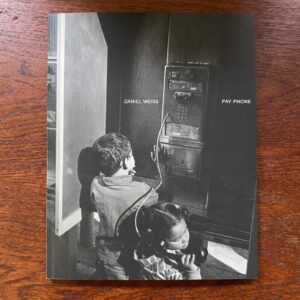JTF (just the facts): A total of 13 color photographic works, hung unframed against white walls in the main gallery space and the smaller second room. All of the works are photo-silkscreen on super mirror polished steel, made in 2015 and 2016. Physical sizes range from roughly 98×49 to 98×59 inches (or reverse) and all of the works are unique. (Installation shots below.)
Comments/Context: One of the unexpected byproducts of the combination of digital photography, smartphone technology, and the development of new software applications in the past decade or so is that photography has become radically more participatory than it used to be. Of course, we have always had self-portraits and casual snapshots, and across the history of the medium, artists and subjects alike have been engaged contributors in the making of images. But our interaction with photography is undeniably evolving, with selfies, Instagram, Snapchat, and other modes of image making rapidly offering us new ways to actively participate (and perform for ourselves and others), further blurring the lines between art and life.
While Michelangelo Pistoletto could not possibly have predicted all that would happen in the world of photography half a century ago, his Mirror Paintings (a series begun in the early 1960s) have proven to be remarkably prescient in their understanding of the trajectory of photographic interaction. Process-wise, these works began as photographic cutouts affixed to actual mirrors and have evolved over the years to photo-silkscreening on polished steel, but the central artistic effect is the same – by bringing the viewer’s reflection into the composition, the mirror forces us (and those around us) to participate in Pistoletto’s artworks.
Most of the Mirror Paintings have been built around a roughly life-sized figure or two, encouraging us to interact with milling groups of people, singular figures acting out elaborate gestures, or body parts interjecting from the sides. And by hanging the works so that they settle at the edge of the floor, they create the appearance of unexpected doorways, as though we could walk through to alternate worlds. But what’s most intriguing is how the works are so energetically activated by participation; our own movements in the gallery bring life to the static imagery Pistoletto has created, adding an element of constant change to a fixed framework. Add a 21st century selfie-making visitor to the mix and the original conceptual twist now bends back on itself even further.
Pistoletto’s newest works using this mirror backdrop effect smartly change the mode of interaction. Instead of using human figures to anchor his open-ended narratives, he’s introduced photographic images of various shelving units, sizing each set to match the width of the mirror. These shelves provide a rigid structure to the pictures, cutting the space into smaller bordered rectangles. He’s also meticulously cut away the backs of these shelves, so that we can see “though” them to the mirror, which of course reflects whatever is in front of it.
The effect is two-fold. The shelves interrupt our view into the “next room”, screening and blocking our view and partially changing the spatial relationship we have come to expect from these works. They also create the new interaction mode of allowing us to reach up and pretend to pick something off the shelves (or from the inside of a closet), seeing ourselves from the “other side”.
Drawn from industrial storage units, the images of shelves depict a wide variety of trades, professions, and passions. Stacks of lights and electrical gear, jumbled piles of grey car parts and engine fixtures, and ordered layers of mallets, hammers, and tools tell the stories of various occupations, while gardening gear, cooking pots and pans, and rows of porcelain vases allude to other interests and pursuits. Several selections provide notable visual motifs, from the geometries of colorful plastic crates and buckets to the textures and drapery of white linens and laundry. In each case, the shelves provide the scaffolding for a particular narrative, from the fruit and vegetable vendor to the painting conservator, with the viewer enlisted as the protagonist.
It is the participatory nature of these works that seems so relevant to the issues facing contemporary photography. While artists like Matt Lipps and Carol Bove have recently used shelving to thoughtfully organize and juxtapose static groups of photographic images, Pistoletto has given us a series of single subject themes and focused attention on the potential for complex interaction with these physical structures. Using the props provided as catalysts for our own creativity, the works encourage us to perform for ourselves, co-opting the impulse of the selfie (or the shelfie) and channeling and redirecting it in original ways.
Collector’s POV: The works in this show are priced at €500000 each. Pistoletto’s photography-based works are consistently found in the secondary markets for contemporary art, but are rarely on offer in the equivalent markets for photography.














